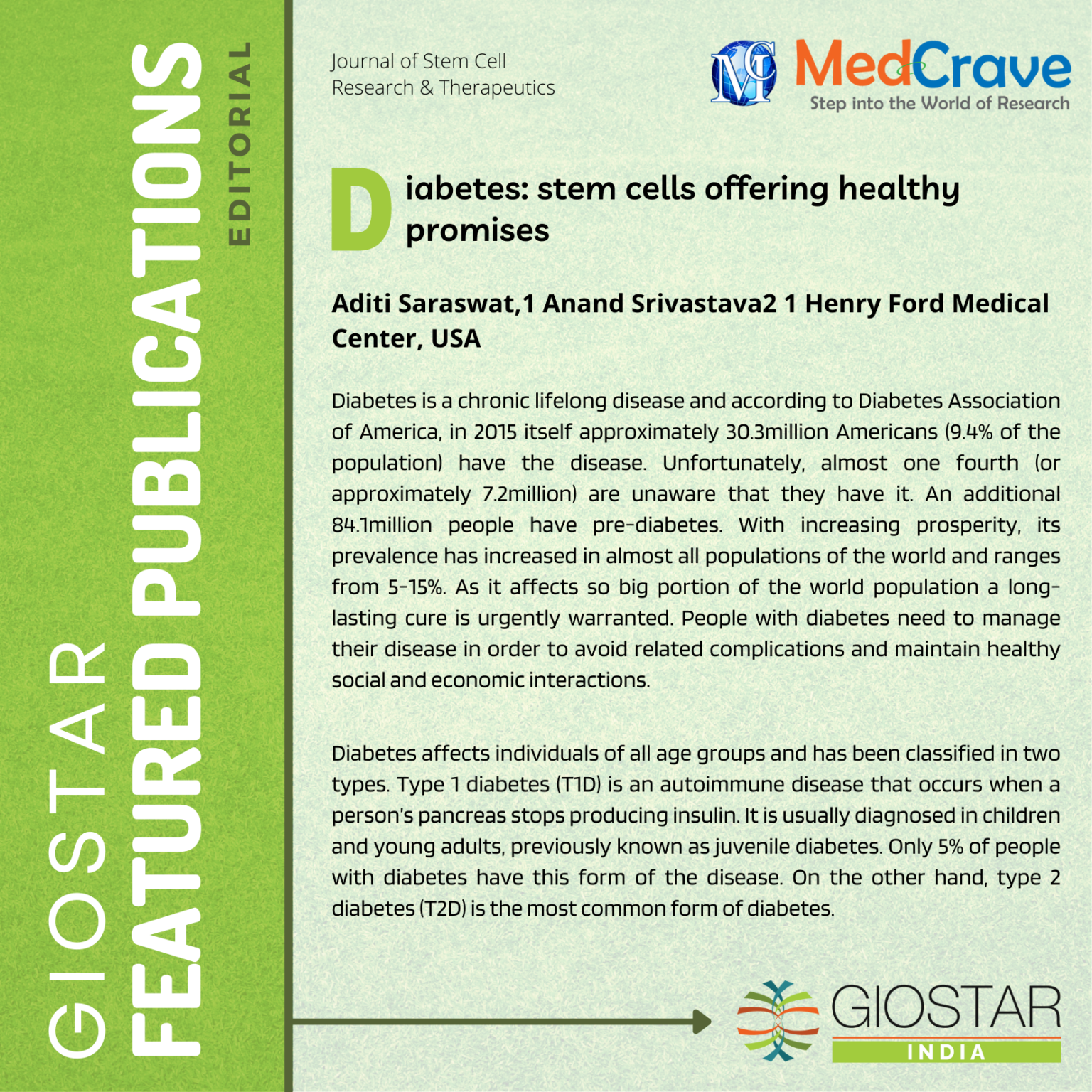
Diabetes: Stem Cells Offering Healthy Promises
Saraswat A, Srivastava A. J Stem Cell Res Ther. 2018 May, 4(3):46-47.
Editorial
Diabetes is a chronic lifelong disease and according to Diabetes Association of America, in 2015 itself approximately 30.3million Americans (9.4% of the population) have the disease. Unfortunately, almost one fourth (or approximately 7.2million) are unaware that they have it. An additional 84.1million people have pre-diabetes. With increasing prosperity, its prevalence has increased in almost all populations of the world and ranges from 5-15%. As it affects so big portion of the world population a long-lasting cure is urgently warranted. People with diabetes need to manage their disease in order to avoid related complications and maintain healthy social and economic interactions.
Diabetes affects individuals of all age groups and has been classified in two types. Type 1 diabetes (T1D) is an autoimmune disease that occurs when a person’s pancreas stops producing insulin. It is usually diagnosed in children and young adults, previously known as juvenile diabetes.
Only 5% of people with diabetes have this form of the disease. On the other hand, type 2 diabetes (T2D) is the most common form of diabetes. In patients of T2D, the body does not use insulin properly mostly because of insulin resistance. Because of that, at first, pancreas compensates by making extra insulin. However, over time it isn’t able to keep up and can’t make enough insulin to keep your blood glucose at normal levels.
Diabetes affects every part of the body and causes complications related to heart, brain, kidney, circulatory system etc. Managing diabetes exerts a significant burden on the economy in general. During 2017, according to an estimate, diabetes-related care of people directly or indirectly could have costed around $327 billion.1 Though a number of medications are already in clinical use but none of them grant a long-term cure and all of them have some or other undesired side-effects.
Since almost all pharmacological drugs, irrespective of the target molecule in the pathway involved in the manifestation of diabetes-related complications, have some side effects a safer and comparatively long last therapeutic alternative is desperately needed. To meet the continuous need for insulin, pancreatic transplants have been tried which turned out to be very cost-intensive and impractical because the donor pancreases have to be recovered from suitable cadavers and then transplanted.2 Logically, transplantation of a tissue from other individual comes up with so many concerns like compatibility of a graft in the new host and its survival as immune rejection is usually a valid concern most of the time. To circumvent all these concerns another alternative way of handling the problem was needed for a long time. Discovery of stem cells and related extensive research has offered a ray of hope to manage the problem efficiently with a sound possibility of a permanent cure.

